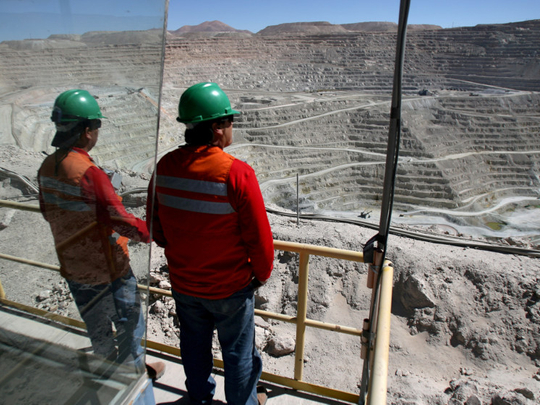
MELBOURNE: Global miner BHP posted a 33 per cent jump in annual underlying profit and a record final dividend on Tuesday, but flagged a delay in future savings as well as cost pressures at some of its operations.
The world’s biggest miner, which has been focusing on simplifying its business and driving returns to shareholders, said it expected its strong momentum to continue into the medium term.
However, BHP chief executive Andrew Mackenzie said the miner was “a little more apprehensive” on the short-term outlook, given trade ructions between China and the United States, and analysts flagged concerns over rising costs.
For the year ended June 30, underlying profit, which excludes one-time gains and losses, rose to $8.93 billion (Dh32.8 billion) from $6.73 billion, just below an estimate of $9.27 billion according to 15 analysts polled by Thomson Reuters I/B/E/S.
BHP paid out a record final dividend of $0.63 a share, up from $0.43 a year ago, on the back of free cash flow of $12.5 billion from a strong operating performance and higher commodity prices.
“A pretty solid result really. I think largely in line with what the market expected,” said portfolio manager Andy Forster of Argo Investments in Melbourne. “Definitely the cash flow was strong, the dividend probably a bit stronger than what we expected.” However, a cut in productivity gains expected in fiscal 2019 — to $1 billion from a previously promised $2 billion — “slightly took the gloss off the results,” he added, although the miner pledged to make the additional savings in 2020.
BHP also noted some cost creep due to geotechnical issues at its Queensland coal operations, rising fuel costs, and pockets of inflation in labour.
“The dividend was better than expected, but the slight fiscal 2018 (earnings) miss and fiscal 2019 cost guidance is likely to cause us to take down estimates modestly,” broker Clarkson Platou said in a report. Shares in BHP fell 1.8 per cent in afternoon trading, compared with a 1 per cent fall in the broader Australian market and a 0.8 per cent dip in rival Rio Tinto.
Including one-time charges, BHP’s profit fell 37 per cent to $3.71 billion.
These included a $2.8 billion post-tax charge from the sale of BHP’s US shale oil and gas assets in July which ended a disastrous seven-year foray into shale.
Total revenue rose 20 per cent to $45.81 billion. Revenue from iron ore mining, BHP’s biggest division, edged up 1.3 per cent, while copper surged by nearly 60 per cent backed by higher production from its Escondida mine in Chile.
Revenue from its petroleum division grew 14.5 per cent on surging oil prices.
BHP said it cut net debt to $10.9 billion, at the lower end of its $10-15 billion target.
BHP said that it would not make a decision on how to return profits from the sale to investors until it was finalised.
The company also took a $650 million charge for the 2015 Samarco dam failure in Brazil that killed 19 people.
— Reuters












